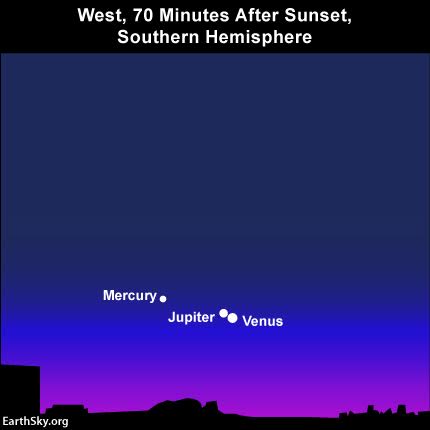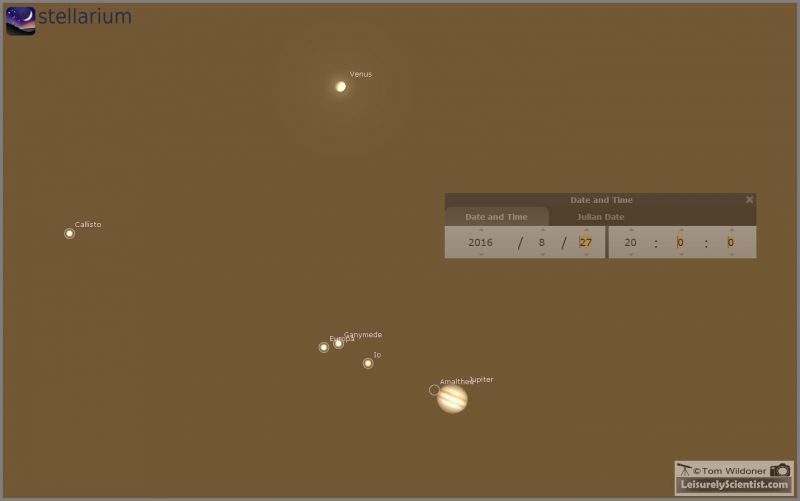On August 27, 2016, the sky’s two brightest planets Venus and Jupiter will stage the year’s closest conjunction of two planets. These worlds appear only about 1/15th degree apart on the sky’s dome. How close is that? Well, 1/15th of a degree is the equivalent of about 1/7th to 1/8th of the moon’s apparent diameter. That’s a very small span, and these two worlds will easily fit within the same binocular or telescopic field of view.
These worlds are close to the sunset, so you’ll need to look shortly after sunset to see them.
From anywhere worldwide, you’ll also want an unobstructed horizon in the direction of sunset.
Have binoculars? Take them along with you for your Venus and Jupiter search.
Given a clear sky, you should see Venus and then Jupiter popping out near the sunset point on the horizon around 30 to 40 minutes after the sun goes down. These recommended almanacs can help you find the sunset time in your location.
Cloudy where you are? Look here for photos of Venus and Jupiter Saturday night.


As has been true for this entire month, Venus and Jupiter – and little Mercury near them – will be easier to see from the Southern Hemisphere than at comparable latitudes in the Northern Hemisphere. For instance, Venus and Jupiter set about two hours after the sun at temperate latitudes in the Southern Hemisphere. At mid-northern latitudes, in contrast, Venus and Jupiter follow the sun beneath the horizon a scant hour after sundown.
Yet, with some effort, from all parts of the world Venus and Jupiter are there to be enjoyed. These two worlds rank as the third-brightest and fourth-brightest celestial bodies to light up the heavens, after the sun and moon. You can see them if you try, and if your sky is clear.
And while it’s true the view is best from the southern part of Earth’s globe, even at northerly latitudes, you’ll still have a shot at catching these two worlds after sunset, given an unobstructed western horizon and a cloud-free sky.
Binoculars will come in handy for scanning near the western horizon!

Bottom line: Spectacular Venus-Jupiter conjunction on August 27, 2016! They’re the two brightest planets, and it’s the closest conjunction of two planets in all of 2016. Don’t miss it!












